Rewire Your Brain for Better Sleep, Mental Clarity, and Daily Calm
Modern life bombards the brain with noise, distraction, and endless stimulation. The result? Sleepless nights, chronic anxiety, and minds that never shut off. The solution isn’t another productivity hack—it’s learning how to reset the brain’s operating system.
The brain runs on patterns. Most of those patterns live beneath conscious awareness. Thoughts become automatic. Stress becomes baseline. Over time, the nervous system forgets how to shift into calm, healing states. But with the right tools—light, sound, rhythm, and guided focus—it’s possible to rewire those patterns and activate deep, restorative rest.
What Is Brain Fitness?
Brain fitness means training the brain the same way we train the body. Just as physical exercise strengthens muscles, mental practices strengthen focus, flexibility, and recovery. A fit brain switches smoothly between stress and calm. It rests deeply, recalls clearly, and handles pressure without collapsing.
This form of training isn't about solving problems with willpower. It’s about shifting brainwave patterns, upgrading subconscious routines, and restoring balance across the nervous system.
Brainwave States: Your Internal Control Panel
The brain operates across several key frequencies. Each has a distinct purpose:
Beta: Alert, thinking, planning. Useful during work but overstimulating if it never shuts off.
Alpha: Relaxed, creative, intuitive. Ideal for flow, meditation, and memory.
Theta: Dreamy, deep focus. The gateway to subconscious learning, insight, and emotional healing.
Delta: Deep, dreamless sleep. Where physical regeneration and immune repair happen.
Gamma: Heightened awareness and mental clarity.
SMR (Sensory Motor Rhythm): Calm, focused wakefulness—often underdeveloped in stressed minds.
In a balanced brain, these frequencies shift smoothly throughout the day. Too much beta and not enough alpha or theta leads to tension, burnout, and poor sleep.
Reprogramming with Light, Sound, and Suggestion
The brain responds to rhythm. Binaural beats, isochronic tones, and pulsed light patterns can nudge the mind into specific states. Gentle flickers of light at certain frequencies, when paired with sound, help the nervous system settle and recalibrate.
Light isn’t just something to see—it’s fuel. Red and blue wavelengths, delivered through the eyes and ears, stimulate photoreceptors in the skin and blood. These receptors send energy and information deep into the body, helping regulate circadian rhythms, hormones, and emotional tone.
When combined with guided suggestions and visualizations, this multisensory approach becomes a powerful tool for brain change. The voice cues serve as software updates, offering new ways to think, process, and rest.
The Power of Intention
The brain is always listening. Every thought, image, and emotion sends a signal. If the last input before sleep is stress, the brain carries that into the night. But when intention is set deliberately—calm, gratitude, safety—the subconscious receives a different assignment.
The most powerful intentions are simple and present-focused:
“Each night I rest more deeply.”
“I release stress and restore energy.”
“My mind and body are in harmony.”
When this kind of input is paired with physical cues—breath, light, sound—the nervous system learns to respond automatically.
How Sleep Rewires the Brain
Sleep is the brain’s repair window. During deep sleep, neural connections reorganize. Memories consolidate. Hormones reset. Cells clean themselves out. But to access this state, the body needs to feel safe. Many people go to bed physically still but mentally activated, replaying worries and planning tomorrow.
The mind needs a task. Left alone, it loops. Guided practices—like breathwork, gratitude scanning, or body awareness—give the brain a new job. Over time, this practice builds new associations: bed equals peace, not pressure.
The Evening Reset Ritual
Start with breath: Inhale for 4 counts, exhale for 8. This rhythm signals safety to the nervous system.
Scan the body: Begin at the feet and move upward. Bring attention and thanks to each area.
Reframe the day: Choose one difficult moment. Picture it in black-and-white. Shrink it. Then, replay it in color with a positive resolution.
Relive the good: Highlight 3 moments of joy or connection. Feel them fully. Store them in your “success reel.”
Set an intention: Affirm what tomorrow will bring. Let the brain rehearse it before sleep.
This ritual blends breath, visualization, memory, and language to change the emotional tone of sleep.
Creating Calm Through Biology
Stress isn’t just mental—it’s cellular. The body needs physical signals that it’s safe to relax. Light, breath, and rhythm send those cues. So do actions like:
Standing instead of sitting
Getting morning sunlight
Turning off blue light at night
Avoiding screens and phones in the bedroom
The ears, surprisingly, play a role in calming the brain. Blood circulating through the ears can absorb light energy that soothes inflammation and stimulates the parasympathetic nervous system. That’s why certain devices deliver low-frequency light through the ears—not just to look cool, but to shift the body into rest mode.
Why Most People Stay Stuck
Most of daily life is shaped by subconscious habits—old emotional patterns, inherited beliefs, past conditioning. Even when there's a desire to change, those programs run on autopilot. Without new input, the system recycles the same results.
To break the loop, the brain needs regular exposure to new ideas, new feelings, and new feedback. This is where guided visualization, daily intention setting, and brainwave entrainment work together to form new neural pathways.
Change doesn’t happen by force—it happens through frequency.
Quantum Focus and the “Other Than Conscious” Mind
Beneath the conscious mind lies a vast network of intelligence that runs the show. This “other than conscious” system manages breathing, digestion, cell repair, and emotional response. It doesn’t speak in logic—it responds to repetition, emotion, and imagery.
Thoughts create pathways. The more a thought is rehearsed, the more real it becomes. Visualizing success, peace, or health while feeling it physically anchors those states in the body.
Every repetition is a vote for a new identity.
Final Thought: One New Thought a Day
Small shifts add up. A single new perspective practiced daily rewires the brain faster than chasing big changes. Each positive thought, grateful moment, or calm breath creates a ripple. Over time, those ripples become new neural highways.
The brain changes with use. If you train it to stress, it stresses better. If you train it to relax, it recovers faster. The choice isn’t always conscious but it can be.

